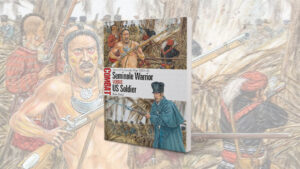Heroes and Cowards: The Social Face of War
by Dora L. Costa and Matthew E. Kahn, Princeton University Press, 2008, $27.95
A Civil War book full of charts, graphs and tables, even when it is combined with intriguing human interest profiles of soldiers who fought in our nation’s epic four-year struggle, can be a risky undertaking for any author. But in Heroes and Cowards: The Social Face of War, by Dora L. Costa and Matthew E. Kahn, this unusual conceptual approach comes across as downright riveting.
Costa and Kahn, both professors at UCLA, used the life stories of 40,000 Civil War soldiers to explore how social dynamics influenced the motivation, behavior and thinking processes of these soldiers. Using information from government documents (e.g., pension records), as well as soldiers’ journals and letters and other available data, the authors provide a compelling look at the influence of social interaction and social networks during a time of war.
Among the topics explored in the book are:
- The make-up of various companies, where factors such as similar ethnicity, age and occupation influenced whether soldiers would remain loyal or eventually desert from the ranks.
- Multiple and diverse social factors that allowed some men to survive horrendous POW camps while others perished.
- How punishments meted out by officers for breaking codes of conduct affected the lives and psyches of soldiers both during and after the war.
- The psychologically daunting experiences of African-American soldiers and how comrades’ attitudes influenced their lives during the war and in its aftermath.
Had the authors chosen to make the book primarily a scholarly examination of data and information, it wouldn’t have been accessible to the average Civil War buff. Instead, they wisely decided to bring all their facts and figures and statistics into a human focus by coupling this research data with thorough, insightful personality profiles.
Costa and Kahn also include photographs that contribute perspective. For example, “before” and “after” photos of one African-American male illustrate the dramatic changes that sometimes occurred when poverty-ridden blacks joined the Union ranks.
The analysis of war data in Massachusetts is a good case sample. We find, all else being equal, that the men who enlisted tended to come from poorer towns. Enlistees also were more likely to be from pro-Lincoln towns, and ideology and money were found to be equally important enlistment decisions.
The authors do not neglect the complex questions concerning why humans are willing to risk their own lives to fight and kill other humans. There are many answers to this question, not always involving ideological passions and patriotism.
Costa and Kahn find that many Northern soldiers saw the Civil War as a war of liberty against despotism. Some fought primarily for the purpose of freeing slaves, while others had no interest in that cause.
Many sociologists, psychologists and military historians have said that soldiers’ primary motive for going into battle is frequently intense loyalty to a small group of comrades. This would explain why many wounded Union troops were so anxious to return to their units, even though they may not have been fully recovered from their injuries.
Heroes and Cowards provides important insight into the lives and social bondings of those who left home and hearth to risk life and limb. We learn that when soldiers fight, they seldom fight alone.
Originally published in the May 2009 issue of America’s Civil War. To subscribe, click here.




